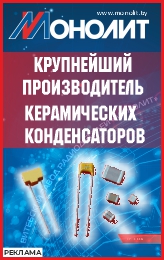Prospects for standardisation and implementation of 6G radio access and core networks The standardisation of 6G communication networks by the International Telecommunication Union and the 3GPP Partnership Project is discussed. A timetable for the standardisation of 6G networks is presented. The views of vendors and researchers on the look and feel of 6G RANs and 6G Core radio access networks are presented.
Positioning in IEEE 802.11az Wi-Fi Local Area Networks. Part 1. Defining the decimetre accuracy problem DOI: 10.22184/2070-8963.2025.125.1.50.56
It is noted that decimetre positioning accuracy of the heterogeneous NR-Wi-Fi networks devices in absence of GNSS signals can be achieved through the use of a two-tier network architecture. At the first layer, in the macrocell served by an NR base station, the device is positioned using NR reference positioning signals with metre accuracy. This allows you to determine the location with accuracy to the nearest wireless local network and determine whether the device belongs to the service area of the Wi-Fi access point. At the second level, the Wi-Fi microcell, the device is positioned using special IEEE 802.11az signals with decimetre accuracy. This paper opens a series devoted to the study of models and methods for achieving decimetre positioning accuracy in IEEE 802.11az wireless local area networks.
New class of codes with error localisation and its noise immunity: the basic idea The possibility of rethinking the established code constructions is considered. The new modification of traditional cascade and generalised cascade codes is offered, that in turn creates essentially new family of codes and opens prospects for development of new decoding algorithms. Three examples of development of codes with error localisation and results of their modelling are resulted. Directions of the further researches of new classes of codes are described.
What SDN lacked DOI: 10.22184/2070-8963.2025.125.1.70.74
Software-defined networks (SDN) are the relatively new ones but logical phenomenon in telecom. However, despite the fact that SDN are already able to generate billions of all kinds of data, they can not always react in time to emerging network situations in terms of preserving infrastructure integrity or ensuring information security, if there is a human behind them. However, connecting artificial intelligence to SDNs can provide a number of previously unattainable significant advantages of such networks compared to "traditional" networks.
Problems of LAN-cables certification Attention is drawn to the gap in the field of LAN-cable certification in the Russian Federation. The unregulated area is outlined, which gives an opportunity to appear on the market falsified products and allows unscrupulous manufacturers not to confirm the declared consumer properties of cable products.
Fixed line networks of the F6G sixth generation Recently, the global telecoms community has started to define the prospects for the fixed works development in the form of the 6th generation (F6G) networks concept. F6G networks differ from previous generations networks because they simultaneously support several key requirements of info-communication services, such as low latency of data transmission, high bandwidth of communication channel and provide wide opportunities for users to connect to the network. The paper discusses the conceptual foundations of F6G networks, presents services and promising optical technologies for implementation of these networks.
Increasing the number of connectable peripherals using a microcontroller pin matrix DOI: 10.22184/2070-8963.2025.125.1.76.78
When connecting a large number of peripherals, such as a stepper motor driver, to a microcontroller, often the number of required pins exceeds the number of available pins, which leads to a change of microcontroller type or the need to create groups of microcontrollers. A method of connecting 16 A4988 stepper motor drivers to an ESP32 microcontroller is proposed. An optimisation matrix of control outputs is used to achieve the result, thus avoiding the use of more expensive drivers using data interfaces to control an individual motor.
MCPTx class services for operative information exchange in critical situations DOI: 10.22184/2070-8963.2025.125.1.58.63
The principles of realization of services intended for operative information exchange in critical situations are described. The predecessor of such services, known by the English term "Mission Critical Push to Talk" is focused on speech traffic. The paper discusses the qualitative evolution of this solution that is focused on the exchange of information of any kind that noticeably increases the value of the obtained information. A brief description of the hardware and software tools used, developed in the company where the authors of the paper work, is given. The directions of further research are discussed.
Main trends in Russian data centre industry DOI: 10.22184/2070-8963.2025.125.1.30.33
A summary of the ten main industry trends in Russian data centre industry as of the end of 2024 is given.
Method for assessing efficiency for project implementation of data centre construction DOI: 10.22184/2070-8963.2025.125.1.34.38
The application expediency of the real options theory to estimate the economic efficiency of projects on development and operation of data processing centres is shown. Presented are the methodology and calculation results.

 rus
rus TS_pub
TS_pub technospheramag
technospheramag technospheramag
technospheramag ТЕХНОСФЕРА_РИЦ
ТЕХНОСФЕРА_РИЦ


